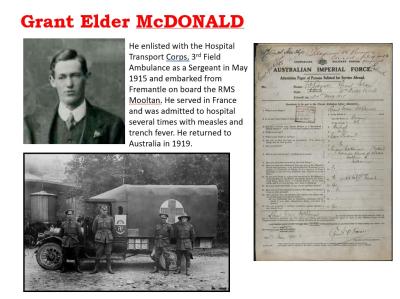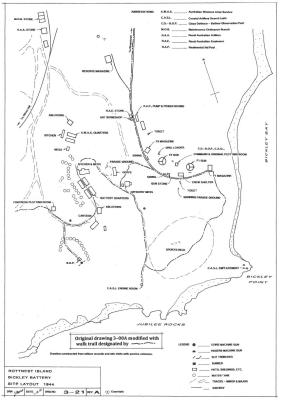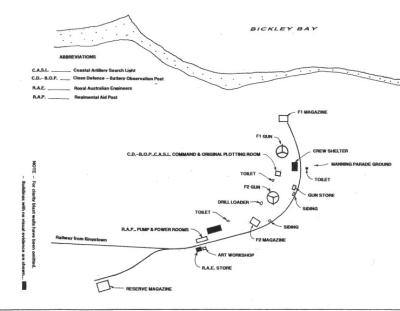World War 1, South-West Asia, Turkiye, Gallipoli, Anzac Cove, 1310 NALEY, 16 Battalion, 1915
Photograph of 1310 Private Gordon Charles Naley was born in 1884 in the scrub on Mandra Balae Station (now Mundrabilla) in Western Australia, 110 kilometres west of the South Australian border. He was the son of an Aboriginal woman (name unknown) and a European man, identified as William, a station manager.
On 17 September 1914, GordonNaley enlisted in the Australian Imperial Force (AIF) at Morphettville, South Australia and was to 16 Battalion. On 22 December, the Battalion boarded the HMAT Ceramic A40 for Alexandria, Egypt with stops at Albany, Aden and Port Said. The Battalion then trained at at Heliopolis until 11 April when they embarked forfor Gallipoli. On the afternoon of 25 April 1915, the first party from the 16th Battalion stepped ashore at Gallipoli to engage in aseries of actions at Popes Hill, and made their way inland to what would become known as Popes Hill, Bloody Angle and in the defence of Quinn’s Post. Late in May, Gordon contracted enteric fever and was evacuated from Gallipoli. It was reported in a number of Australian newspapers that he had died of his wounds. He spent several months in hospital in England and did not rejoin the Battalion until 19 August 1916, where they were involved in the Battle of Mouquet Farm l
. On 11 April 1917, the 16th Battalion unsuccessfully assaulted the Hindenburg line at Bullecourt in France. Gordon was captured along with approximately 1,170 Australian soldiers. He was wounded in action suffering shrapnel wounds to the left hip. Gordon spent the next twenty one months as a prisoner of war at Limburg and Zerbst in Germany, arriving back in England on 6 January 1919.
Two weeks later he married Cecilia Karsh, a baker’s assistant from Fulham. On 4 June 1919, Gordon and his wife departed from England and disembarked in Adelaide on 23 July 1919. The couple made their way to Boggy Flat a small settlement not far from Waikerie area On 27 July, Gordon was discharged from the AIF as Corporal Gordon Naley. Within a year the family was residing on a Soldier Settlement block at Winkie in the Berri. By late 1927, due to Gordon’s failing health, the Naley family had moved to the suburb of Brooklyn Park in Adelaide. Gordon Naley had been suffering from respiratory complications from his time in the war when he passed away at the veterans’ hospital in nearby Myrtle Bank on 28 August 1928. He was 41 years of age.
Details
Details
The service of 13 Diggers, now recognised as indigenous, original ANZACs, who served with the Australian Imperial Force in Gallipoli are commemorated by name in dioramas in the World War 1 Gallery at the Australian Army Museum of Western Australia.
Australian Army Museum of Western Australia
Australian Army Museum of Western Australia
Other items from Australian Army Museum of Western Australia
- Medal - Meritorious Service Medal (1916-1918) Gallantry and Immediate
- World War 1, South-West Asia, Turkiye, Gallipoli, Anzac Cove, 2413 SHAW, 52 Battalion, 1915
- World War 1, South-West Asia, Turkiye, Gallipoli, Anzac Cove,165 McCALLUM, 16 Battalion, 1915
- World War 1, Western Australia, Perth heritage week Exhibit, 251 McDONALD GE, Hospital Transport Corps
- World War 2, Western Australia, Rottnest Island, Bickley Battery and Bickley Camp, Layout, 1944
- World War 2, Western Australia, Rottnest Island, Bickley Battery, Layout
- World War 2, Western Australia, Rottnest Island, Airfield Camp, Layout, 1944
- World War 2, Western Australia, Commemorative Banner, 2/7 Battalion AIF
- World War 2, Eastern Mediterranean, Greec and Crete, 6 Division, 1941
- World War 2, Eastern Mediterranean, North Africa, Bardia and Tobruk, 6 Division, 1941
- World War 2, Eastern Mediterranean, North Africa, Siege of Tobruk, 9th Division





Scan this QR code to open this page on your phone ->







